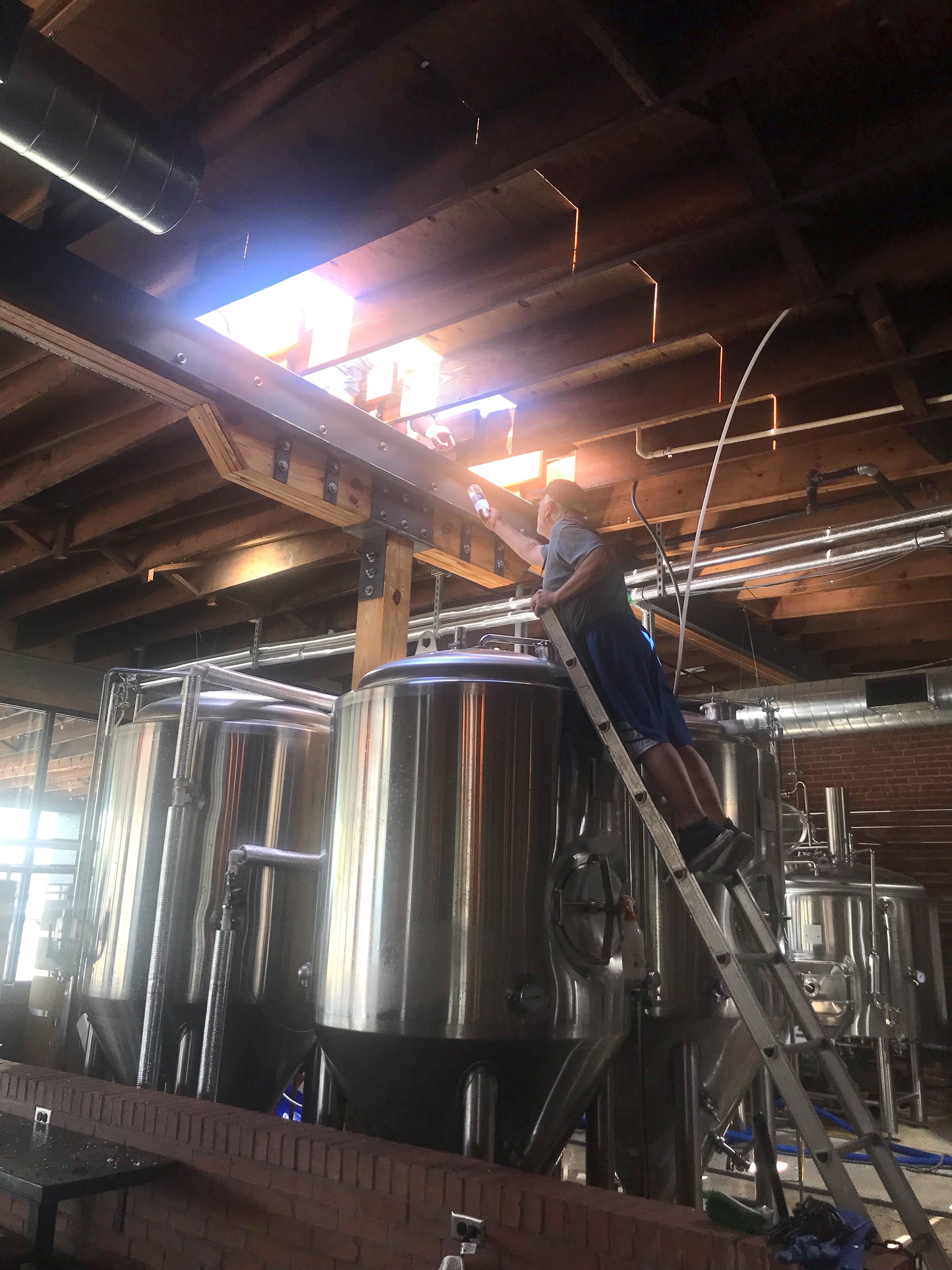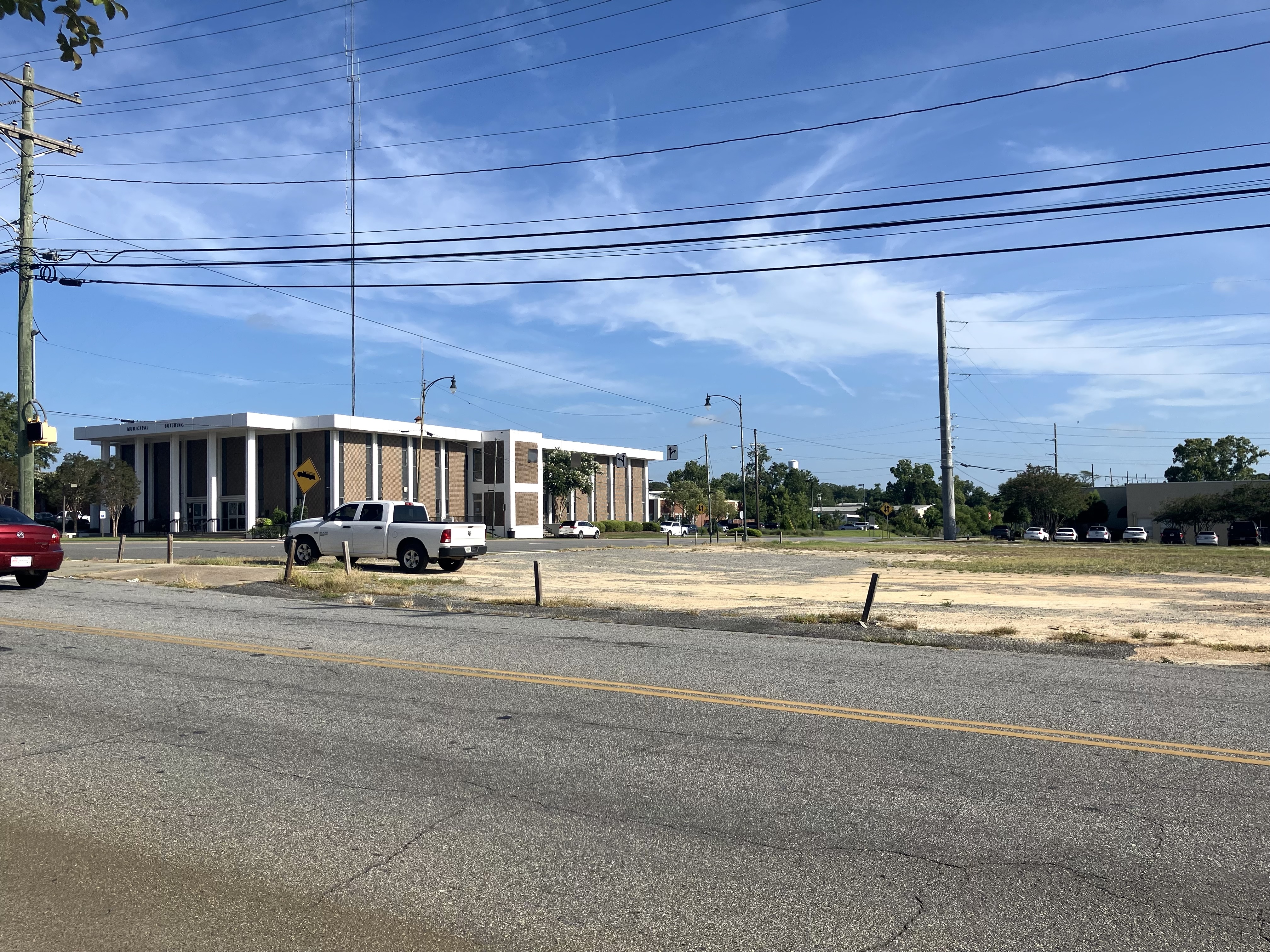Limiting access critical in opioid battle
Published 3:00 am Sunday, December 3, 2017

- To help combat opiate and prescription drug abuse, the Baldwin County Sheriff’s Office operates an anonymous 24/7 drug take-back box at the county jail to provide residents a place to dispose of their expired and unwanted drugs.
This is the eighth part of a month-long look at opioids in Georgia, specifically the SunLight Project area of Valdosta, Thomasville, Moultrie, Millegdeville, Dalton, Tifton.
VALDOSTA – Through the years, Fred Ware’s collection of prescription painkillers swelled in the bathroom closet of his Valdosta home.
Trending
Ware said the medications were leftovers from dental work, sore throats and various procedures he’s had during the last two decades.
The retired Valdosta State University professor said he worries about the unused prescription painkillers that are likely also sitting around unguarded in other people’s medicine cabinets, available for curious children or those who might wish to sell them on the street.
“That’s like having a loaded gun,” he said.
Many medicine cabinets probably look a lot like Ware’s, according to a recent review published in the journal JAMA Surgery.
That study found that about two-thirds of surveyed patients reported having unused painkillers after a surgical procedure – and few of them practiced safe storage or disposal techniques.
New State Requirements
Trending
The state’s emerging opioid crisis – which left 1,302 dead in 2015, according to the Centers for Disease Control and Prevention – has brought more attention to the prescribing habits of doctors, dentists and other prescribers.
State lawmakers passed a measure earlier this year that requires prescribers to use an electronic prescription drug database designed to curb doctor shopping and abuse, which has been available on a voluntary basis.
Last year, that system recorded about 9.2 million prescription opioids – such as hydrocodone, tramadol, oxycodone and codeine – in a state with about 10.3 million total residents. Nearly 8 million have been dispensed so far this year.
Prescription painkillers are the leading killer in opioid overdoses in Georgia, although about one-fifth of deaths last year involved the cheaper alternative, heroin, according to state data.
When legislators approved the mandate, only one quarter of the state’s doctors were enrolled in the program. Even fewer of them were regularly using it.
Wanting to change that, lawmakers overwhelmingly approved a measure that makes participation mandatory.
Prescribers must register for the program by Jan. 1, and they must begin checking it in July before prescribing opioids or benzodiazepines, such as Xanax and which are frequently abused alongside opioids. And then prescribers are expected to check again at least once every 90 days.
But with a month left to go, only about half of the state’s 30,000 eligible physicians have signed up, according to information from the state Department of Public Health, which now oversees the state’s prescription drug monitoring program.
Prescribers who neglect to sign up or check the database will have to answer to their regulatory agency, such as the Georgia Composite Medical Board.
“We wanted to create incentives within this legislation to try to encourage doctors not to overprescribe medication without telling a doctor how to practice medicine,” the bill’s sponsor, Rep. Kevin Tanner, R-Dawsonville, said from the House floor in March.
The incentives involve carving out situations where prescribers don’t have to check the database, such as when the prescription is only for a three-day supply of no more than 26 pills.
Tanner’s bill took a softer approach than another proposal in the Senate that would have left prescribers with the threat of a criminal charge for failing to use the database.
Gov. Nathan Deal recently pointed to Tanner’s measure as one of the steps taken in the last year or so to curb the rise in opioid overdoses.
“Hopefully, that will begin to show some effect in that regard,” Deal said to reporters after the recent ribbon cutting of the Georgia Bureau of Investigation’s morgue in Atlanta, which was expanded partly because of the increase in opioid overdose deaths.
“But we, quite frankly, have to call on the entire community that is associated with the opioid crisis. If these are prescription opioids, we have to ask the question: who prescribed it? Why did they prescribe it? Did they consult the registry to determine if there were other doctors that were also prescribing this same drug?”
A Monitoring Tool
Dr. Travis Bailey, a Valdosta anesthesiologist with the Centers for Pain Management of Georgia, said he sees the state’s prescription drug-monitoring program as a tool that helps provide objective patient information in a field of medicine where there is usually little.
“Somebody walks in to see me and they say, ‘The severity of my pain is 10 out of 10,’ and then I have no way of saying, ‘Oh, the severity of their pain is actually 10 out of 10,’” Bailey said.
But seeing whether a patient has had other opioid prescriptions filled at multiple pharmacies or sought early refills in the last few months helps to “objectify pain,” he said.
Bailey, a Valdosta native who recently returned to his hometown to practice medicine, said he doesn’t just check the system when prescribing an opiate. He checks when writing any prescription.
“It’s the best thing for the patient,” he said. “It’s the highest quality of care that I can offer.”
Additionally, Bailey’s patients sign an agreement that they will bring their medications in with them for a pill count, which he said helps assess the success of the treatment. There are also urine drug screens.
Bailey said there is “a plethora of treatment options” at his disposal for pain – many of which do not involve opioids. Still, the powerful prescription painkillers have their place, he said.
“Opiates are not a problem when prescribed appropriately,” Bailey said. “There is a population out there of patients in pain who benefit from their opiates.”
‘A real-time view’
At Hamilton Medical Center in Dalton, opioid use has dropped by 19 percent in the last four years, according to Greg Stinnett, the hospital’s pharmacy director.
Stinnett attributed the reduction to “the intentional efforts of the physicians and staff.”
“A majority of abused prescription drugs are often obtained from family and friends’ home medicine cabinets, finding their way into the wrong hands, and turning into a very dangerous situation,” Stinnett said.
The new law also requires pharmacists to update the prescription drug database daily, as opposed to every week.
“This will allow the prescriber to have a real-time view of the patient’s opioid and benzo history and allow for a more informed decision when considering prescribing further medication,” Stinnett said.
“The overall effect should be a decrease in overprescribed and dispensed doses leading to fewer doses available for misuse,” he added.
Moultrie’s Colquitt Regional Medical Center has cut the amount of prescription opioids dispensed there by one quarter after adopting its own stricter rules. For example, the emergency room provides only enough pain pills to serve patients until they can consult their own physician the next day, according to hospital CEO Jim Matney.
“That doesn’t mean we don’t have a problem” in the community, Matney said. “Those people don’t end up in our ER, because we don’t give (it) out.”
The hospital’s pain center also is playing a role, he said.
“When we get a new patient, the first thing we do is get their medication list,” Matney said. “If we see they have a lot of opioids, we won’t treat them there. We tell them they should go to their private doctor.”
In Thomasville, Archbold Memorial Hospital is currently focused on educating its staff on the new state requirements.
“This communication has raised awareness and opened channels of communication in our community regarding the growing concern over the ‘opioid epidemic’,” said Chris Newman, PharmD, assistant vice president of pharmacy and laboratory services at Archbold.
‘They just begin to pile up’
Fred Ware, a retired Valdosta State University professor, said he rarely used the painkillers that were prescribed to him through the years.
“I’d just put it on the shelf,” the 82-year-old said. “I’m really old. They just begin to pile up.”
He put off discarding them because he said he wasn’t exactly sure what to do with them.
Environmental and public health concerns kept him from tossing them in the trash or flushing them. There’s also no local prescription drop-off location since the Lowndes County Sheriff’s Office discontinued its program.
So the 15 or so bottles have just sat there on the top shelf of his bathroom. But with a little research, Ware recently found a method that satisfied both him and U.S. Food and Drug Administration.
He dumped two scoops of his Siamese cat Wonton’s litter in a large Ziploc bag with water and poured in the multitude of pills. Used coffee grounds or dirt will also do the trick.
Some local pharmacies, such as Barnes Drug Store in Valdosta, offer disposal kits for less than $10. Other pharmacies in parts of Georgia have a drop-off box on site.
Aside from Lowndes County, all SunLight Project team coverage areas – which also includes Thomasville, Moultrie, Tifton, Milledgeville and Dalton – have active drop-off programs administered through a local law-enforcement agency.
The Baldwin County Sheriff’s Office, which has a box at the jail, has collected and destroyed 280 pounds of medication in the last four years. The Moultrie Police Department recently pulled 75 pounds of pills from its box.
The Tift County Sheriff’s Office and the Thomas County/Thomasville Narcotics/Vice Division manage each respective community’s program but couldn’t provide data on the amount collected.
A drop-off box in the lobby of the Whitfield County jail is emptied monthly and recently yielded about six pounds of medication. The Dalton police department reports it has collected 101 pounds of medications since May.
Dalton police spokesman Bruce Frazier said it’s hard to say what impact such boxes have on preventing prescription drugs from falling into the wrong hands.
“Every pill that is collected and destroyed, as opposed to being left out in the world, is a pill that can’t be misused,” he said.
Frazier noted a lot of abuse is tied to pills stolen from family members, friends or acquaintances.
“There’s clearly still a large problem with opioid abuse despite measures like having prescription drug drop locations and also special days to encourage proper disposal, so it’s not a cure-all,” he said.
“But I think it’s safe to say proper disposal of medications is an important part of stemming the tide of the epidemic.”
The SunLight Project team of journalists who contributed to this report includes Charles Oliver, Eve Guevara, Patti Dozier, Alan Mauldin, Thomas Lynn and Will Woolever. Editors are Jim Zachary and Dean Poling. To contact the team, email sunlightproject@gaflnews.com.





